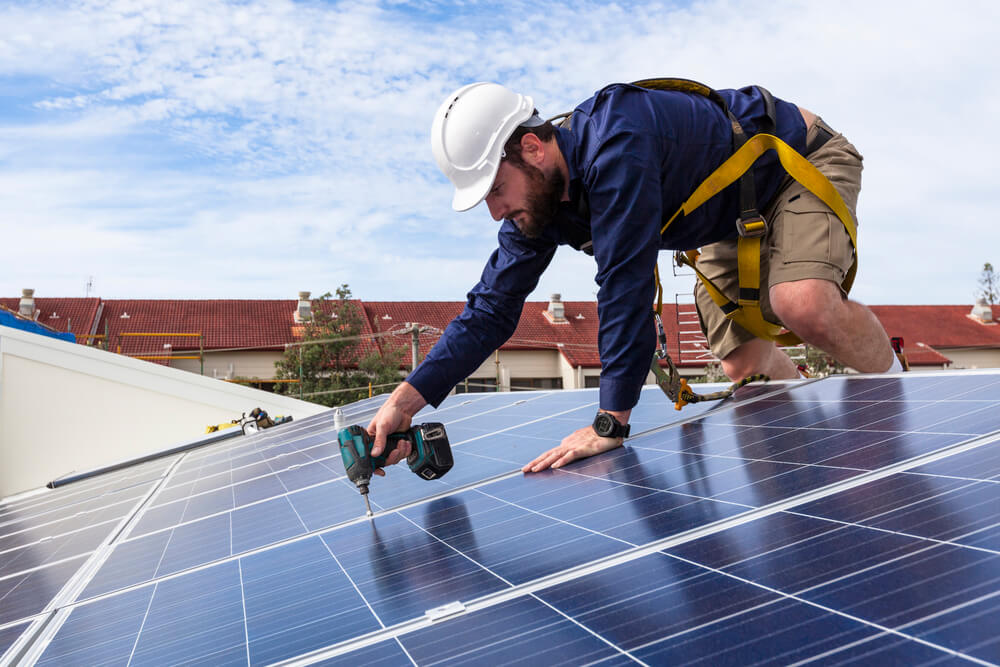Solar energy system installation is a small project that competent installers can complete in a short period of time. The formal processes between choosing an installer and having a working system can take a lot longer. Here’s an overview of all the steps solar installers go through when starting a project:
1. Solar Evaluation and Site Survey
Solar evaluation involves discussing your questions and goals concerning the installation. You can choose a roof or ground mount and determine how much energy the unit will provide. The consultant also uses your electric bill to help size up your system. Pictures of your existing transformer, breaker panel box, and other electrical units are taken to help develop an accurate quote. Solar installers can also remotely complete preliminary designs and quotes but must schedule a site survey before finalizing the plan.
Site assessment provides a closer look at the job requirement and can result in design and price alterations. The installer can identify project details, from small things like tree trimming to major roof work needed before installation. Solar evaluation and site assessment can be virtual with the help of mobile devices or cameras. The installer can guide you through the things to photograph and ask questions to help assess project requirements.
2. Solar System Designing and Review
Your solar consultant can provide a detailed quote and contract soon after the initial meeting. The contract outlines the project’s design, pricing, financing options, storage, and site improvements needed for the installation. You’re required to review and sign the contract and then send it back to the installer. The team then reviews the documents for accuracy and completion before approving your contract. If everything is in order, the installer moves to the design and engineering phase.
Solar panel engineering is done on the backend using software. The engineering team reviews the information submitted and maps the data on your roof. Installers also go through the solar regulations in your area and can visit the site to address any concerns. You’ll get the chance to review the design and request changes before everything is finalized. If you’re satisfied with the design, the team will proceed with fabrication to prepare your panels for installation.
3. Paperwork and Permit Approvals
The solar installation team usually handles all permits, paperwork, and approvals required for your project. Solar energy system installations involve state and municipal requirements, utility paperwork, and homeowners’ association approvals where applicable. Organizations that oversee the size, design, placement, and installation include local permitting departments, utility companies, and incentive programs. Approval timelines vary based on local governments, making this phase one of the wild cards in solar installation.
In recent years, the U.S. Department of Energy has encouraged local governments to expedite approvals for solar installation. Your installation approval can happen fairly quickly, but some jurisdictions delay approvals for months. Because approvals can take several weeks, leading installers offer regular updates and are available for consultations. Installers can also pursue approval from the electrical provider or utility company for the interconnection.
4. Finalization and Installation
Your solar installer can proceed with installation once all the permits and paperwork are complete. The time between the initial meeting and installation day takes months, so a few things can change. The installation team may require another assessment for pre-job preparations, which include resolving potential hazards and setting safety protocols. Preparations can also involve trimming trees and moving objects around to create enough space for installation.
On the installation day, the team starts installation in different phases, including racking, micro inverters, PV modules, and cleanup. Solar installers must also test your system to determine if the project has met installation goals. Leading consultants usually outline the installation plan and steps during the first meeting.
Seek Reputable Solar Installers Today
Consider using solar power for your home or business. The right vendor can help you with a quick and easy installation process. Get started today by finding a quality solar company near you.
